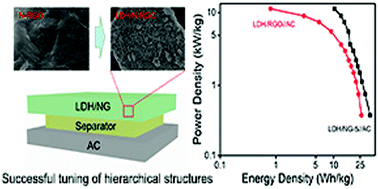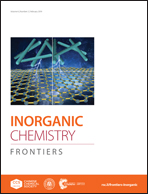Synthesis of 3D hierarchical porous Ni–Co layered double hydroxide/N-doped reduced graphene oxide composites for supercapacitor electrodes†
Abstract
In this work, three-dimensional porous Ni–Co layered double hydroxide nanosheets are vertically decorated on N-doped reduced graphene oxide via a simple one-step microwave-assisted hydrothermal process. The incorporated N-doped reduced graphene oxide brings the following advantages: firstly, the improved hydrophilicity of the N-doped reduced graphene oxide offers more nucleation sites to grow layered double hydroxide nanosheets on its surface. Secondly, the addition of N-doped reduced graphene oxide can greatly enhance the conductivity and specific surface area of the composites, thus resulting in better capacitance performance and improved rate capability. This composite possesses a high specific capacitance of 1720 F g−1 at a current density of 3 A g−1 and retains 960 F g−1 at a high current density of 50 A g−1. The asymmetric supercapacitor assembled by adopting the prepared composites as the positive electrode and activated carbon as the negative electrode achieves a high energy density of 31.2 W h kg−1 at the power density of 0.354 kW kg−1 and a good long-time cycling stability (83% retention over 10 000 cycles).



 Please wait while we load your content...
Please wait while we load your content...